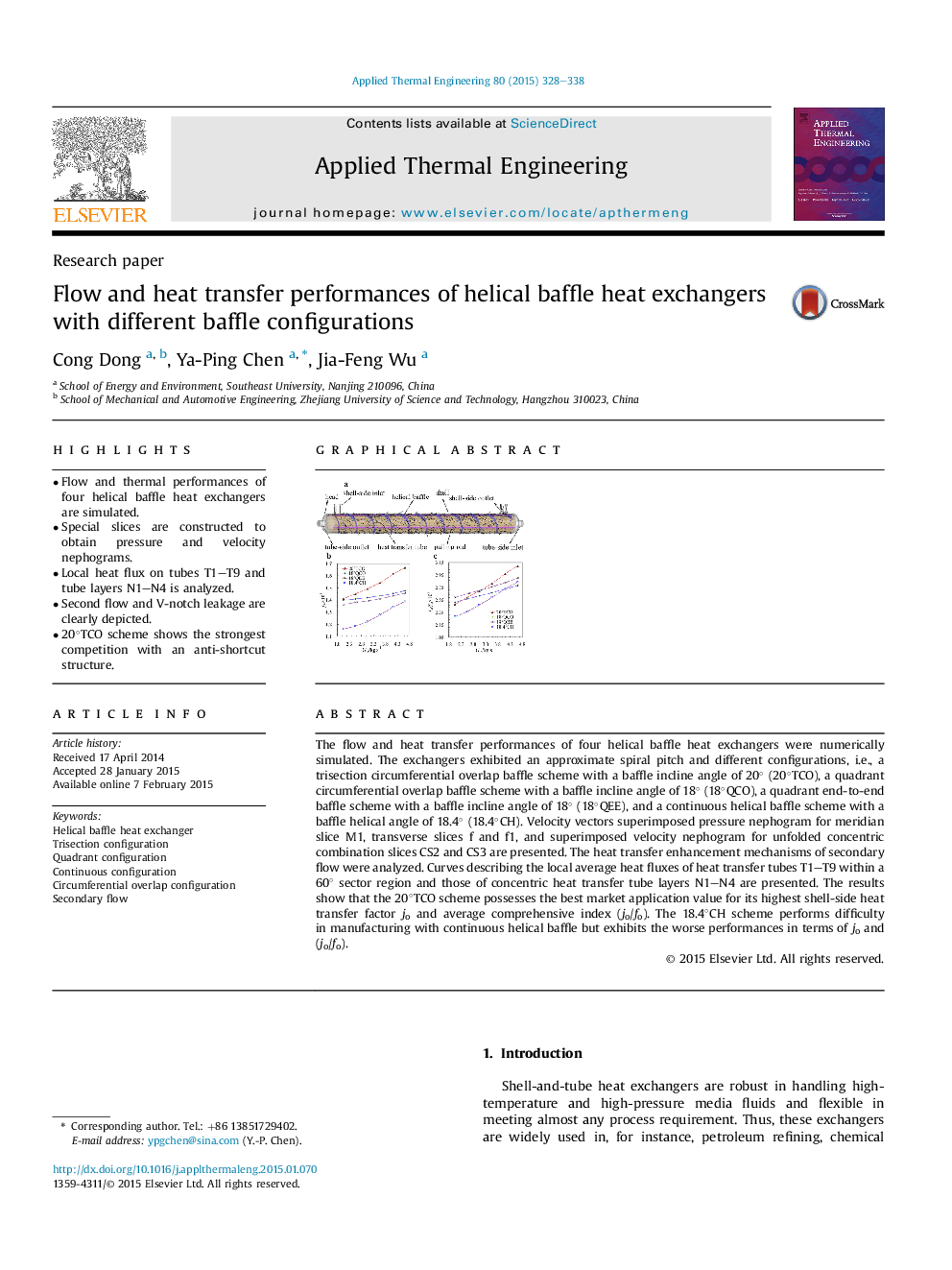| Article ID | Journal | Published Year | Pages | File Type |
|---|---|---|---|---|
| 645692 | Applied Thermal Engineering | 2015 | 11 Pages |
•Flow and thermal performances of four helical baffle heat exchangers are simulated.•Special slices are constructed to obtain pressure and velocity nephograms.•Local heat flux on tubes T1–T9 and tube layers N1–N4 is analyzed.•Second flow and V-notch leakage are clearly depicted.•20°TCO scheme shows the strongest competition with an anti-shortcut structure.
The flow and heat transfer performances of four helical baffle heat exchangers were numerically simulated. The exchangers exhibited an approximate spiral pitch and different configurations, i.e., a trisection circumferential overlap baffle scheme with a baffle incline angle of 20° (20°TCO), a quadrant circumferential overlap baffle scheme with a baffle incline angle of 18° (18°QCO), a quadrant end-to-end baffle scheme with a baffle incline angle of 18° (18°QEE), and a continuous helical baffle scheme with a baffle helical angle of 18.4° (18.4°CH). Velocity vectors superimposed pressure nephogram for meridian slice M1, transverse slices f and f1, and superimposed velocity nephogram for unfolded concentric combination slices CS2 and CS3 are presented. The heat transfer enhancement mechanisms of secondary flow were analyzed. Curves describing the local average heat fluxes of heat transfer tubes T1–T9 within a 60° sector region and those of concentric heat transfer tube layers N1–N4 are presented. The results show that the 20°TCO scheme possesses the best market application value for its highest shell-side heat transfer factor jo and average comprehensive index (jo/fo). The 18.4°CH scheme performs difficulty in manufacturing with continuous helical baffle but exhibits the worse performances in terms of jo and (jo/fo).
Graphical abstractThe flow and heat transfer performances of four helical baffle heat exchangers, exhibiting approximate spiral pitch but with different baffle configurations, i.e., a trisection baffles one, two quadrant baffles ones and a continuous helical baffles one, were numerically simulated. The secondary flow and V-notch leakage within shell side were clearly depicted, for the purpose of seeking mechanism of heat transfer enhancement. The results show that the trisection circumferential overlap baffle with 20° incline angle (20°TCO) scheme has the highest shell-side heat transfer factors jo and comprehensive index (jo/fo), which possesses potential applications value in engineering. However, the 18.4°CH scheme has the worst shell-side heat transfer factor jo and comprehensive index (jo/fo).Figure optionsDownload full-size imageDownload as PowerPoint slide
